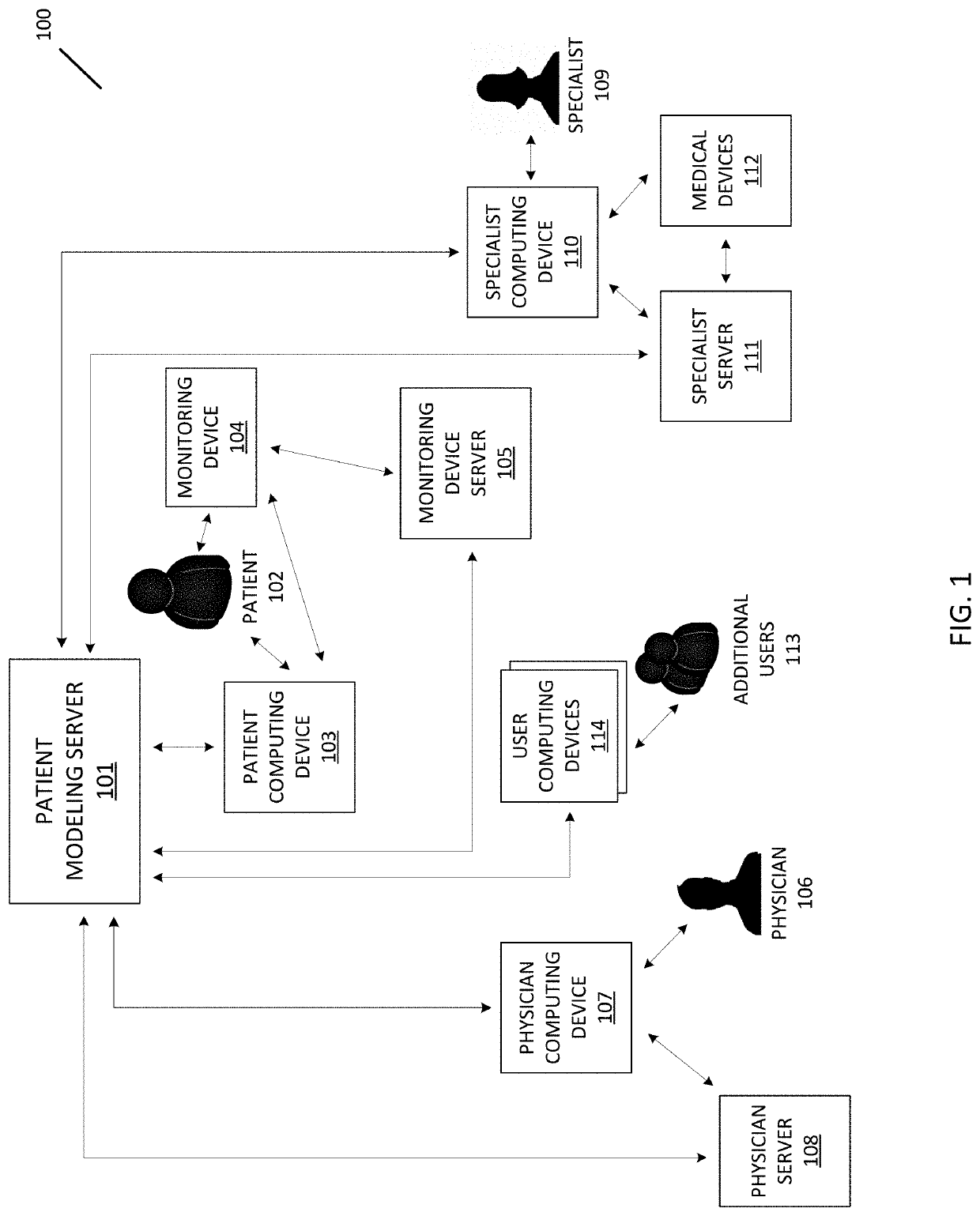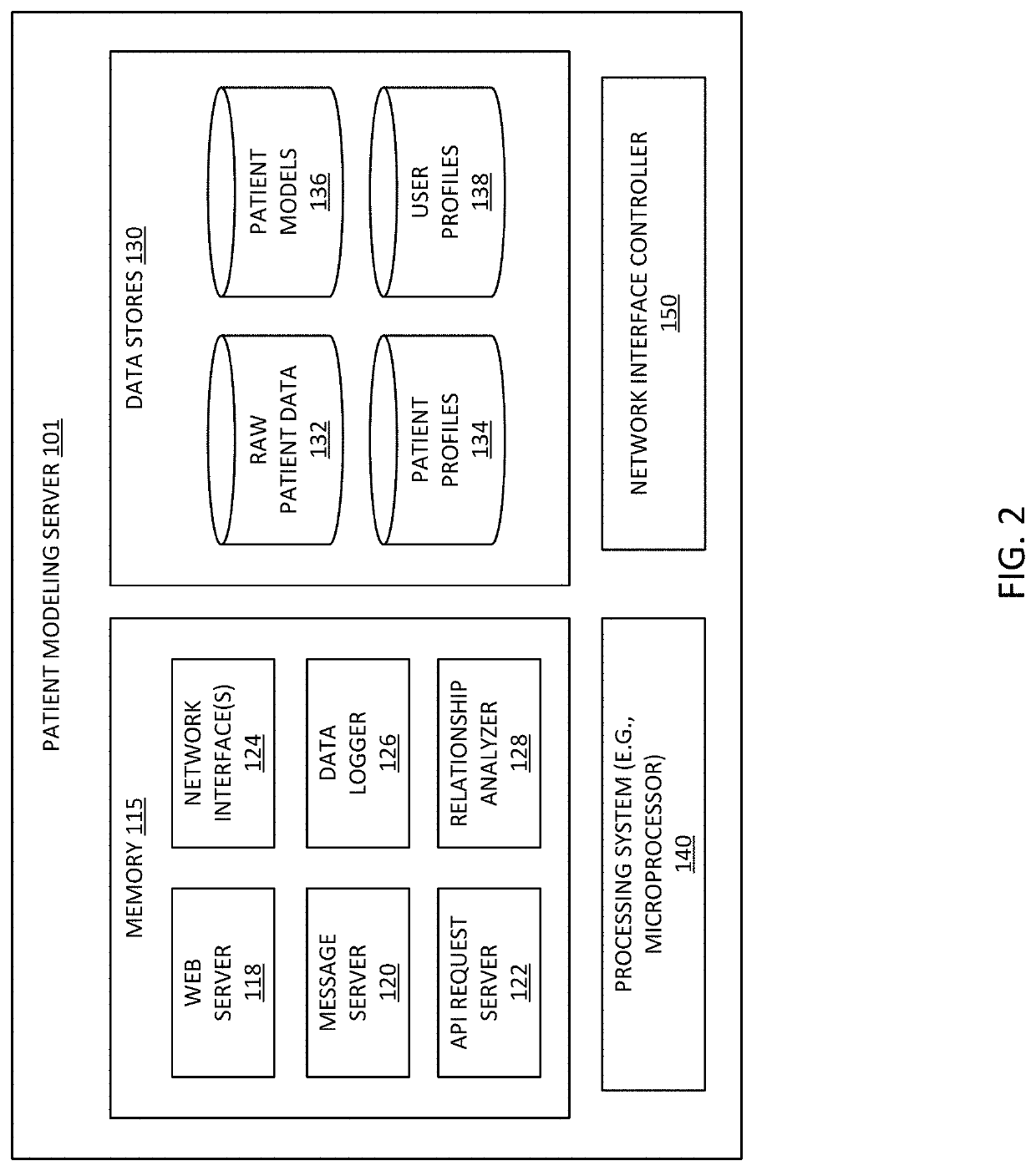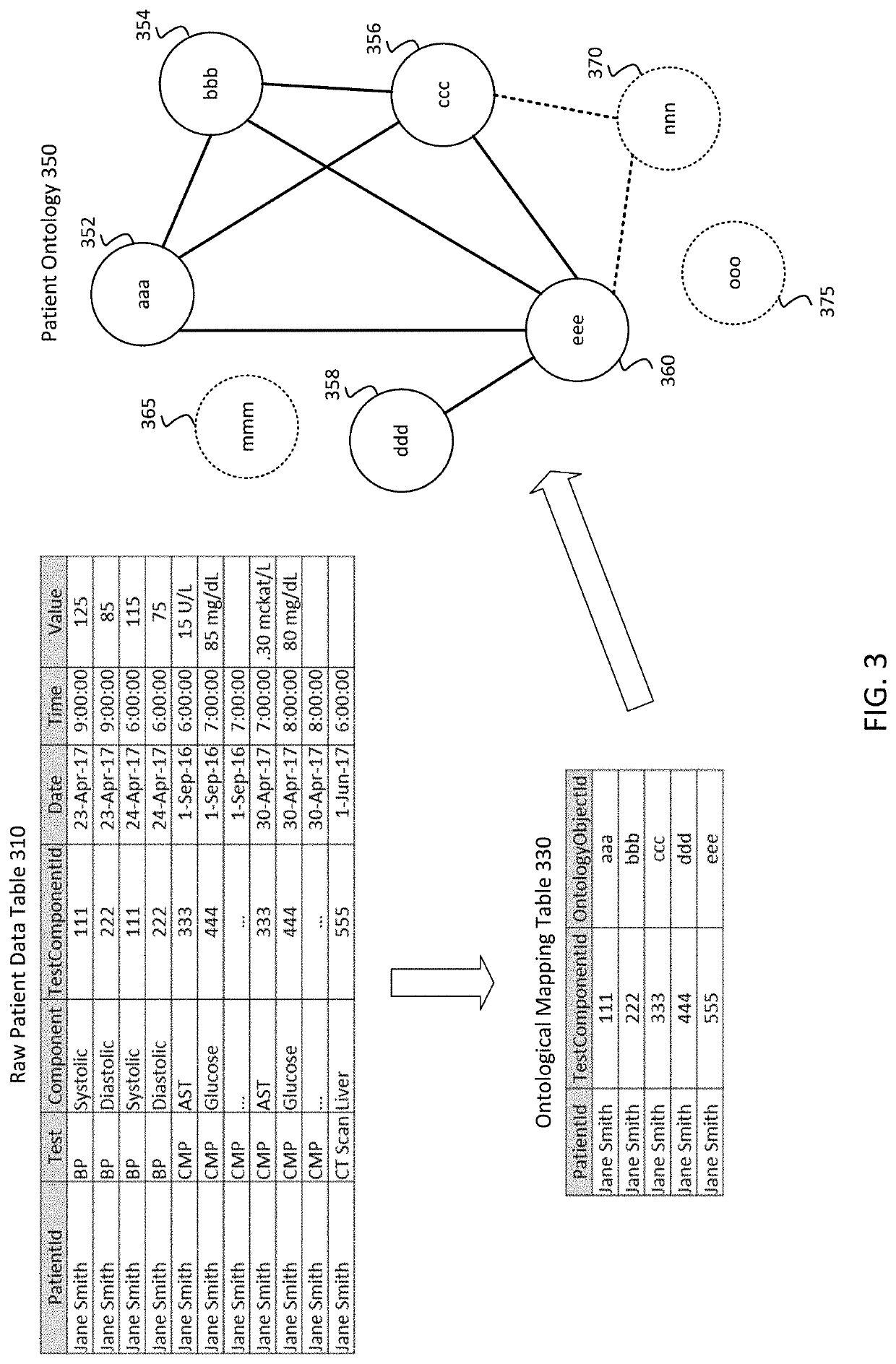Patient-centric modeling of patient data
a patient data and patient technology, applied in the field of patient data management, can solve the problems of doctors being caught off guard by unexpected and unforeseen side effects and symptoms, neither patients nor their conditions are identical, and immunotherapy treatments can hyper-stimulate the immune system
- Summary
- Abstract
- Description
- Claims
- Application Information
AI Technical Summary
Benefits of technology
Problems solved by technology
Method used
Image
Examples
Embodiment Construction
[0011]This document describes embodiments that implement a method of generating and maintaining patient-specific models of patient data. Embodiments generate and maintain the patient-specific models by receiving and analyzing data for a patient, determining individualized ranges for patient data collected for a patient, and using the individualized ranges and trends to anticipate, predict, or otherwise detect changes with respect to the patient's health or condition that may require a notification message or alert to the patient or a caregiver. To further enhance the patient-specific models, embodiments use the patient data to identify relationships between elements of patient data for a patient. In some embodiments, relationships may be unique or otherwise vary from patient to patient based on changes in values in patient data that are detected concurrently, within a number of samples of each other, or within an amount of time of each other. The process described herein solves the ...
PUM
 Login to View More
Login to View More Abstract
Description
Claims
Application Information
 Login to View More
Login to View More - R&D
- Intellectual Property
- Life Sciences
- Materials
- Tech Scout
- Unparalleled Data Quality
- Higher Quality Content
- 60% Fewer Hallucinations
Browse by: Latest US Patents, China's latest patents, Technical Efficacy Thesaurus, Application Domain, Technology Topic, Popular Technical Reports.
© 2025 PatSnap. All rights reserved.Legal|Privacy policy|Modern Slavery Act Transparency Statement|Sitemap|About US| Contact US: help@patsnap.com



